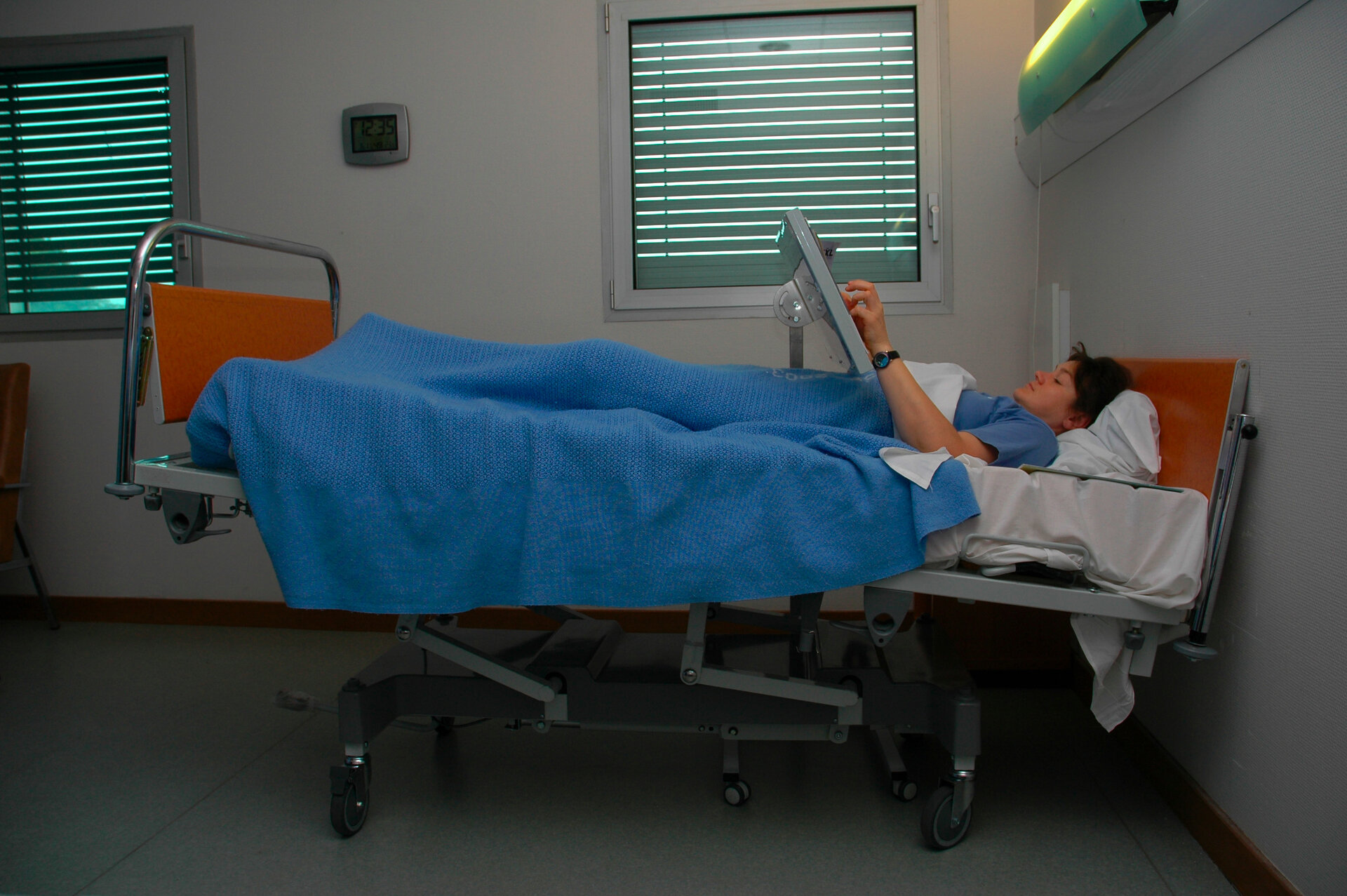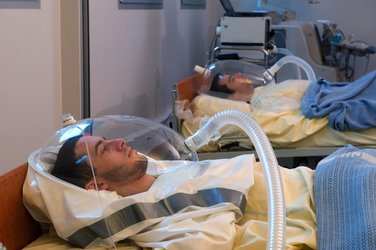What are bedrest studies?
Bedrest studies offer scientists a way to see how the human body adapts to weightlessness. They allow researchers to test techniques to counteract the negative effects of living in space.
The results benefit people on Earth – many negative effects of living in space are shared as people get older naturally, such as osteoporosis, muscle loss and orthostatic intolerance.
Volunteers spend usually from five to 60 days in bed with their head down, usually at 6° below the horizontal. They may not stand up unless a research programme demands it and must perform all daily activities in bed including eating, showers and exercise.
By submitting themselves to this upside-down regime, the volunteers’ bodies start to adapt as if they were in space.
Scientists monitor the volunteers continuously to understand how their bodies change and why. Results allow measures to be devised that will help astronauts on space missions as well as bed-ridden people recuperating from illness.

Bedrest studies offer a cheaper and more practical alternative to studying human bodies in space. The research often takes place in hospitals or clinics with specialised equipment and personnel.









